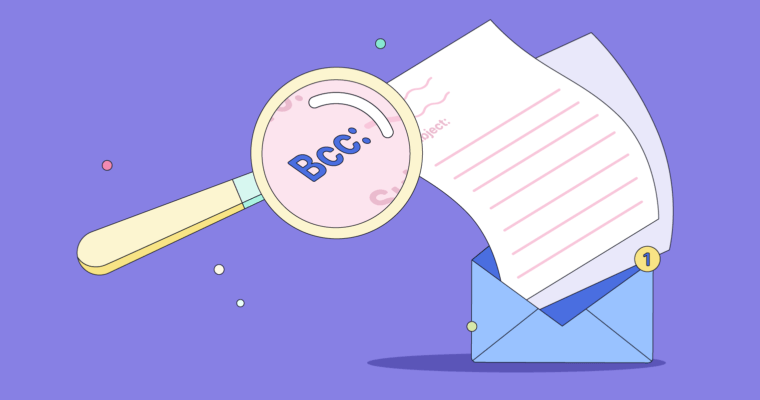
Giving someone a lot of work to do, taking on a new responsibility, asking for leeway, requesting a favor, disagreeing with someone, expressing a strong opinion, or just saying hi after a long radio silence—these topics are tough in conversation, and when you’re trying to broach a difficult subject over email, there can be even more at stake.
Grammarly has put together a guide of best practices for sending emails on difficult topics without coming across as aggressive, demanding, or rude. When the time comes for you to send such an email, make sure you take AIM.
What is AIM, you ask? It’s all about your Audience, Intent, and Message. It’s a useful tip for strategic communications in general and can come in extra handy when you’re writing an email with an unpleasant message, big request, or general bad news for your recipient.
Audience: The Big Picture
When you fire away email after email on a daily basis, you’re probably not thinking too hard about the hopes and dreams of every person you’re writing. But for the big, tough messages you have to send, take some time to think about your recipient and about using email to make your point.
Make sure email is the right medium for the message
With email, you have plenty of time to think through your message and carefully choose your words. However, you don’t get that human element that can make all the difference in some difficult interactions. Talking in person gives you the tools of tone of voice, facial expression, and body language. If you’re giving bad news, you can show that you’re sympathetic. If you’re asking for a raise, you can project confidence. Some conversations should take place in person.
That said, it’s also possible to craft your writing in a way that shows you’re a thinking, caring human—but it takes work. If you use email, choose your words carefully to convey the right tone to go along with the content of your message.
Know your recipient
Some people exchange pleasantries and personal stories over email before getting down to business. Other people read the subject line and click delete (or reply—but only if you’re lucky). If you know the person you’re emailing—or anything about them—you can probably hazard a guess about whether they’re the type of person who responds better to more lead-up and personal info or a short, pointed request.
For example, if you’re asking your cousin Fred to send you his professional-caliber photos of last summer’s family reunion, you’ll probably start off slow:
Subject: Hi and photos
Hi Fred!
I still have fond memories of our visit on the beach last summer! How did your bike race go over Labor Day weekend? If it was anything like our ride around the lake, I’m sure you made it onto the podium.
I remember you took a lot of photos over the weekend, and I’d love to revisit those memories. Would you mind sending me a few of your favorites?
Thanks, and looking forward to our next reunion!
Lots of nice family touches. And a few compliments don’t hurt either.
On the flip side, if you’re writing to a professor who gets hundreds of emails a day, it can be a good idea to put your request in the first line, or even in the subject line. For example:
Subject: Letter of recommendation by 1/15?
Dear Professor Stone,
I’m applying for a fellowship in New York this summer. Given my work as your research assistant, would you be willing to write me a letter of recommendation? Here is a link with more information.
Bottom line: especially if you really need a response, try to envision your email recipient’s habits and plan your message accordingly.
Intent: Define Your Goal
What’s the goal of your email? How do you want the recipient to respond? It might be helpful to open an empty “compose” box and write the goal of your email. Sure, you’ll do lots of rewording to make sure the final message is tactful, polite, and effective. But keeping that main idea front and center while you’re drafting will help you make sure that your reader knows exactly what to do.
Be strategic with your subject
For most recipients, you’re not going to make your request or give your news in the subject line; it takes some working up to. Write a subject that doesn’t give away the bottom line but does give a sense of what’s coming. Here are some words and phrases you might use:
- Planning for
- Reply by
- Request for
- Action needed
- Decision needed
- Signature needed
In dire circumstances there’s always the big, scary, all-caps “URGENT,” but if you’re trying to be tactful, try to avoid that one unless all else fails.
Put your ask up front
Nothing says confidence like coming right out with the bottom line at the top.
For example:
Dear Boss,
I want to manage the company’s next big case.
It might seem scary to make your demand right at the beginning, but it shows confidence, responsibility, and willingness to tackle a problem head-on. Especially if you’re asking for responsibility or you’re writing someone who gets mountains of emails every day, a good way to get what you want is to say that you want it from the get-go.
It’s all about structure
The ingredients: a subject that gets the recipient’s attention, a friendly greeting, a direct statement of the purpose of the email, any necessary detail, and a friendly sign-off.
The recipe: short, direct sentences to get your point across and paragraphs with clear, informative topic sentences. If you have a complicated message that can’t be conveyed in five or so sentences, use lists. Bullet points or numbered lists have several advantages:
- They’re easy to read
- They help highlight key details
- They prevent your email from looking like a wall of text
See?
Message: Choose Your Words with Care
You have your audience and your intent: now you need to craft your message so that it’s best suited for the audience, effectively gets across your intent, and helps you achieve your email goals. After you’ve written a polite, carefully worded email, take another look at your messaging. Especially if you’re asking for something or broaching a topic that the recipient might not be thrilled about, the importance of careful communication can’t be overstated.
Check your tone for anger, accusation, or sass
What you wrote might sound neutral to you, but words can come across as condescending or aggressive without a face and tone of voice to go along with them. If you’re sure email is the right way to communicate, make sure the email you write communicates the point in the right way.
Take this message, for example. In person, the words could be stated in a nice way, but in writing, they could come across as passive aggressive, bossy, or even rude.
Dear Kevin,
I wanted to check whether you’re going to finish your part of the group project in time. It’s due on Thursday, and your part is the last one we’re waiting for. Can you let me know if you’re going to finish your slides so we can wrap up the presentation?
Thanks, Brenda
Kevin may not be a great worker, but Brenda’s message might make him feel defensive or insulted. It might even backfire, making him not want to continue with the project. Brenda will have better luck with a message like this:
Dear Kevin,
I hope things are going well with you. Just checking in about your status on the group project to make sure we’re on the same page. As we agreed last week, you’re in charge of slides 4-6, and the presentation is due Thursday. Let me know if you want to go over anything in advance.
Thanks for your work on the project, and let me know if you have questions! Brenda
In general, if you’re saying something the recipient won’t want to hear, take these tips from Psych Central:
- Put yourself in the recipient’s shoes and write with empathy
- Avoid the word “should” or making the recipient feel guilty
- Don’t make threats or ultimatums
- It’s okay to offer advice, but don’t give it unless you’re asked
It’s all about treating the recipient like a human. And there’s more where that came from.
Add a human touch
If you’re writing something that could come across as accusatory or angry, or if you’re giving bad news, a few simple phrases can really help turn the tone around.
Here’s how Brenda softened what might have seemed like an accusation to Kevin:
- I hope things are going well with you (human touch)
- Just checking in (gentle nudge)
- Making sure we’re on the same page (giving the benefit of the doubt)
- Thank you for your hard work (acknowledging Kevin’s work so far—and making him feel like he’d better live up to the compliment)
- Let me know if you have questions (offering help)
Phrases like these can help soften a blow. And even if there’s not a blow, they can show a glimmer of humanity that makes any email a bit more pleasant to read and respond to.
Finally, remember your grammar
We couldn’t leave that one off the list. And not just because we kind of like grammar, but because writing full sentences with proper spelling and punctuation is an important part of communicating your point. Not only will writing properly ensure that you’re being clear, it will also make sure you look professional, self-assured, and thoughtful.
And those are very good adjectives on the path to getting what you want.
![]()






